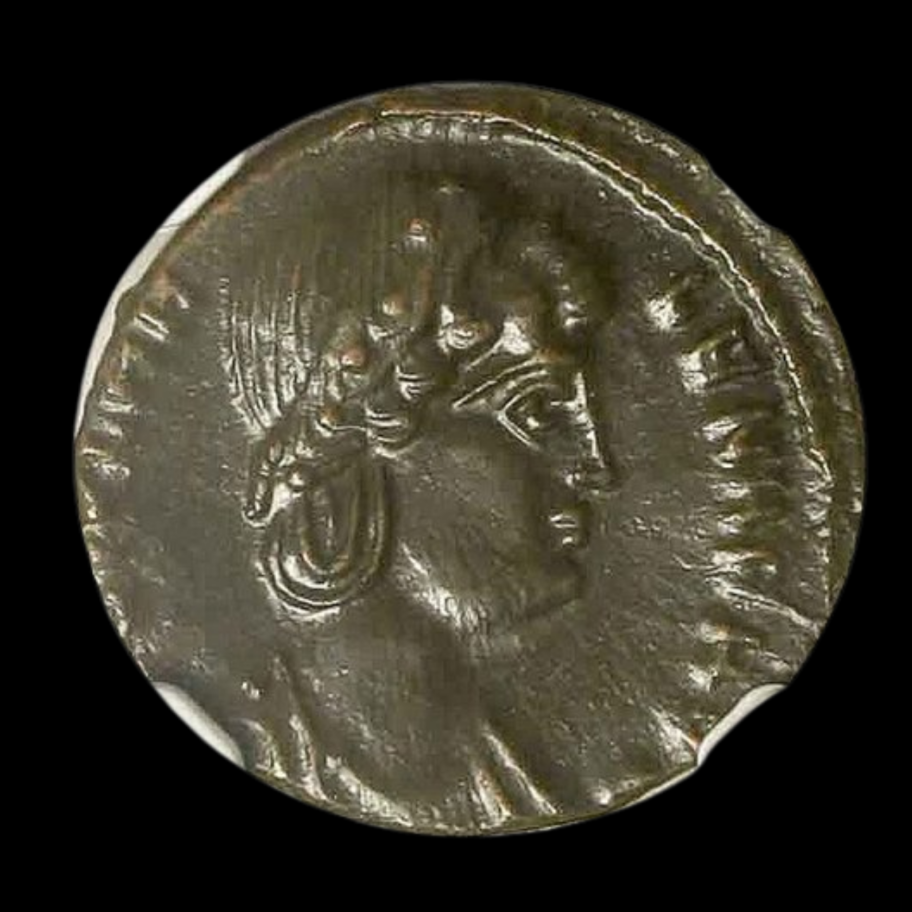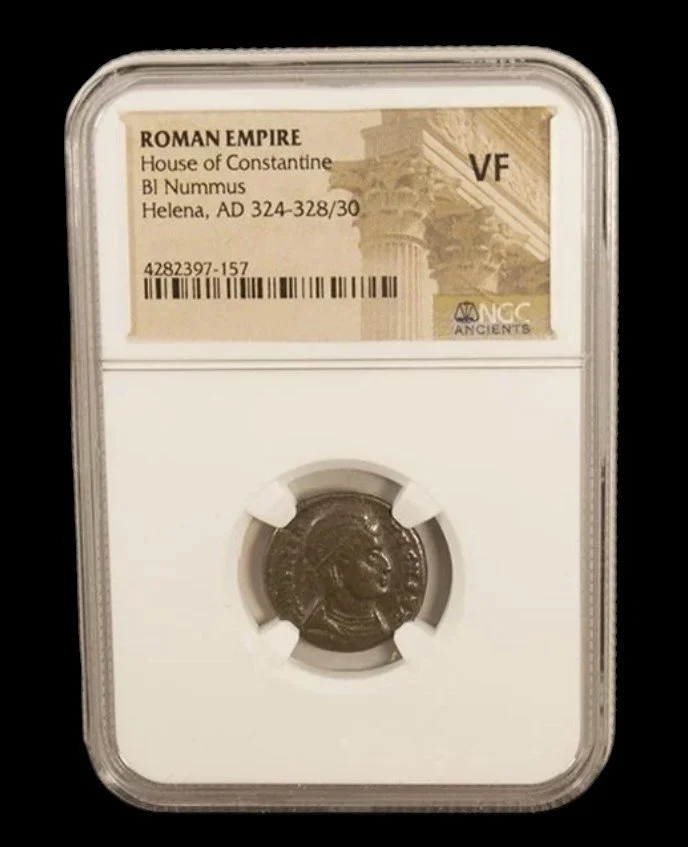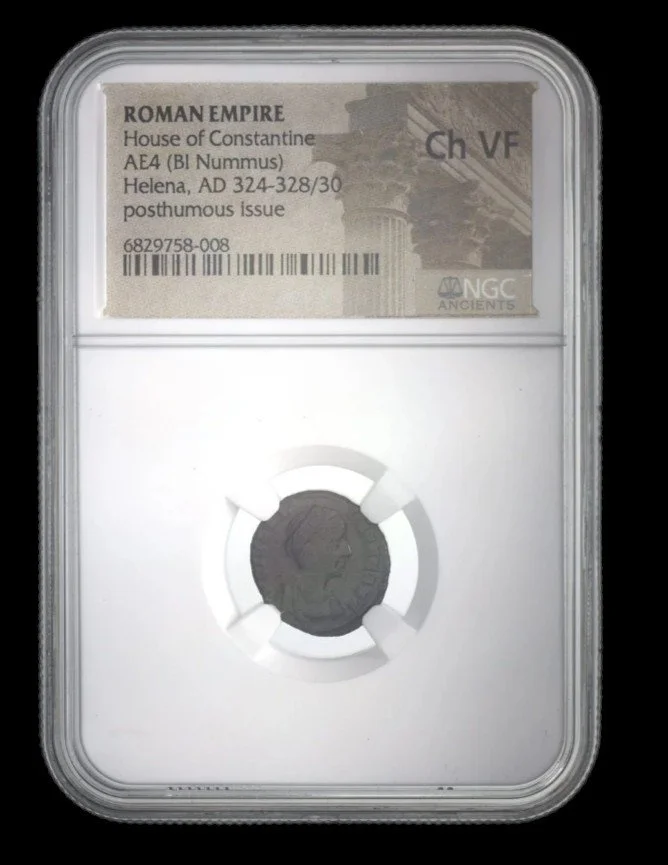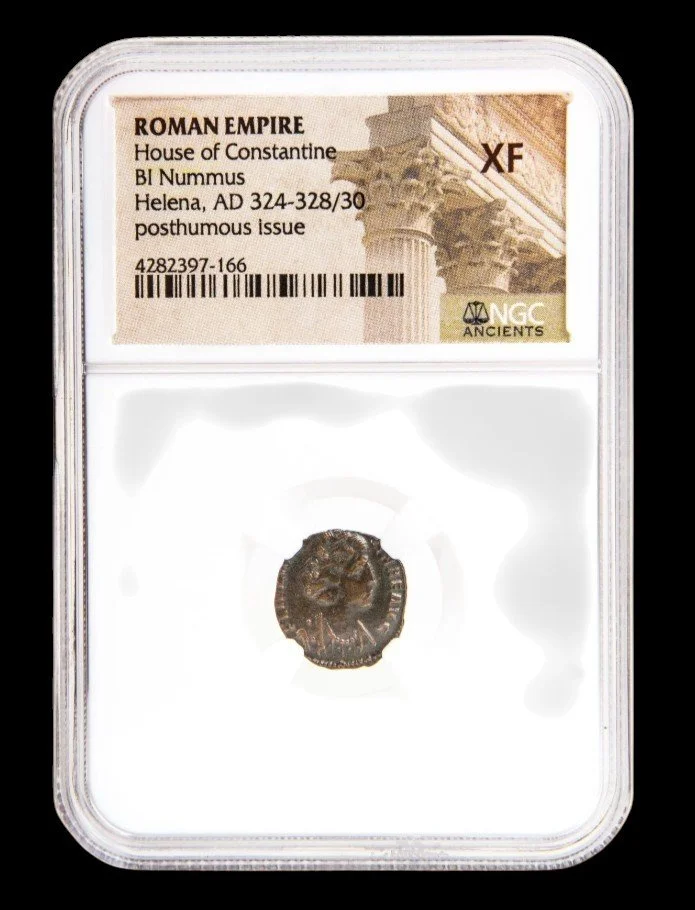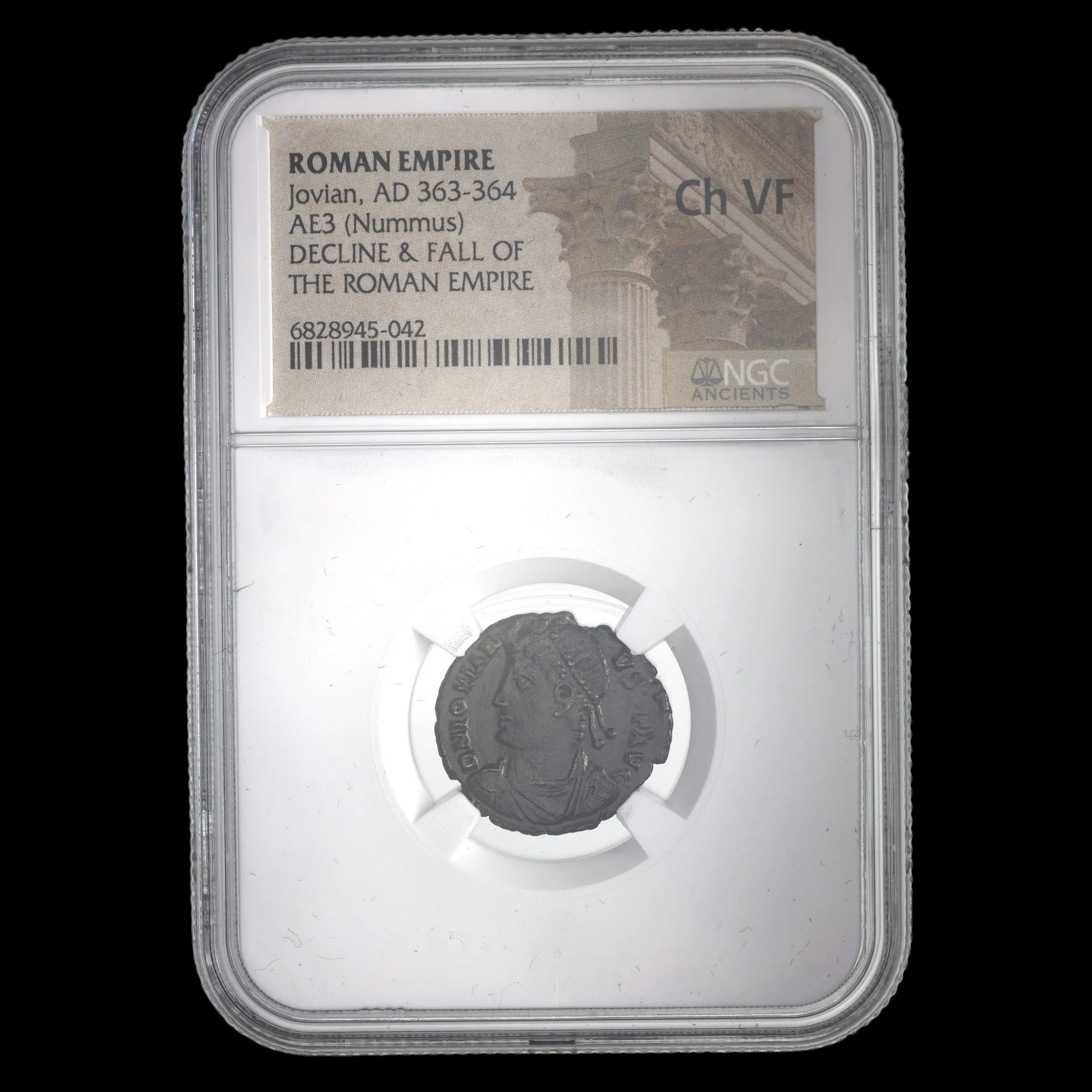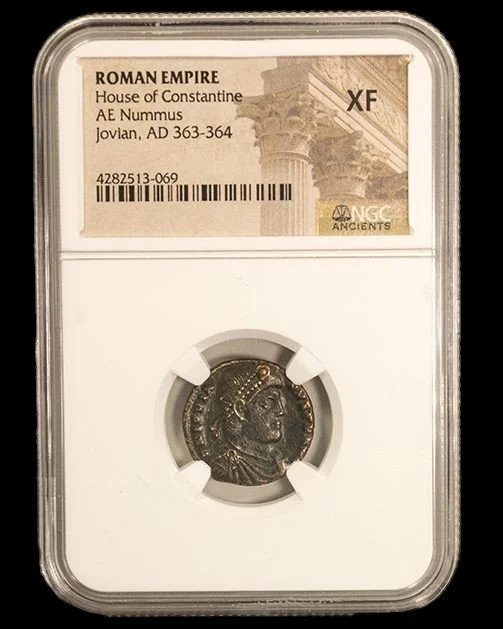 Image 1 of 7
Image 1 of 7

 Image 2 of 7
Image 2 of 7

 Image 3 of 7
Image 3 of 7

 Image 4 of 7
Image 4 of 7

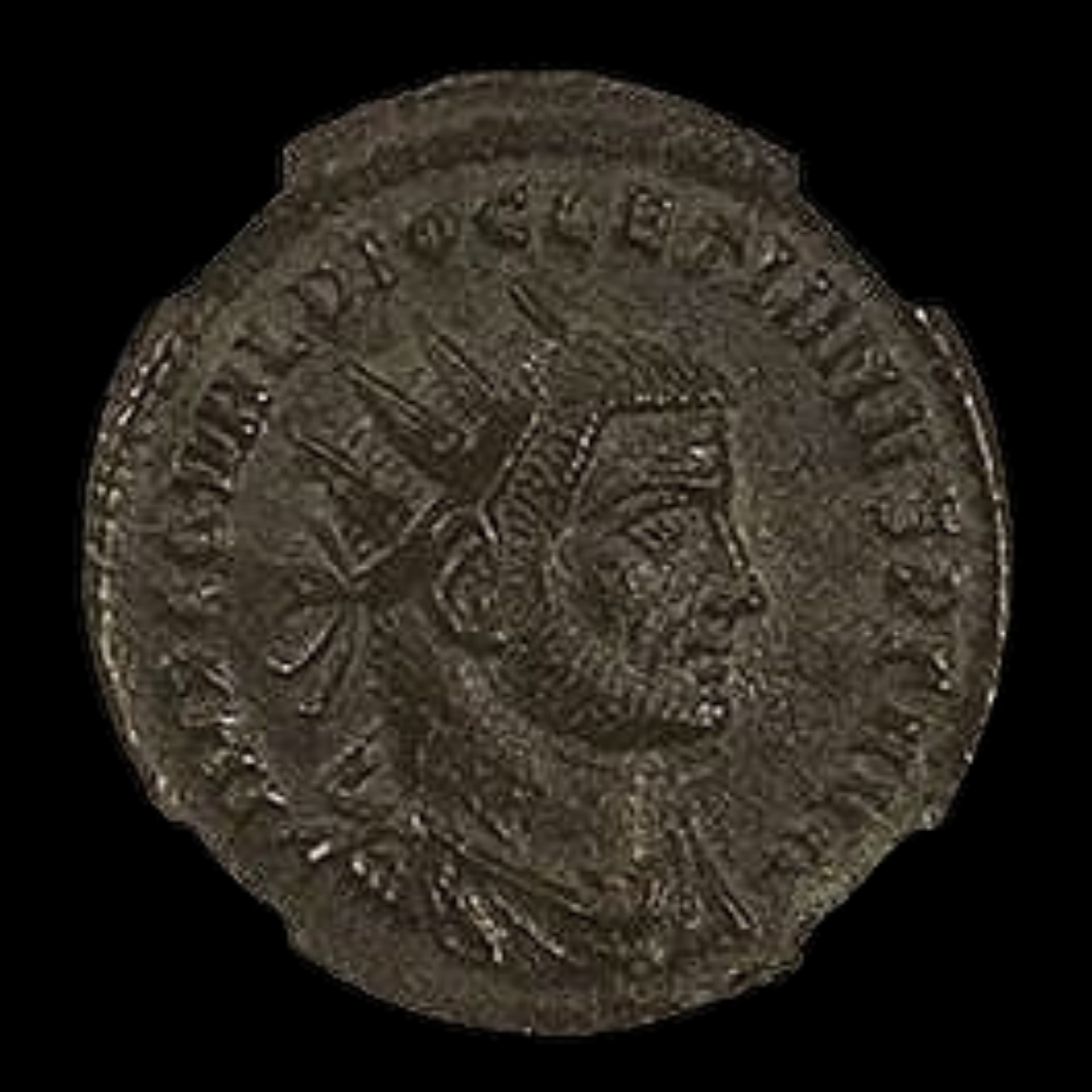 Image 5 of 7
Image 5 of 7

 Image 6 of 7
Image 6 of 7

 Image 7 of 7
Image 7 of 7








Bronze Coin of Diocletian (about 1740-1750 years ago) (ANT)
The coins shown are representative examples of the grade and type, but not the actual specimens for sale. For details on NGC’s grading standards and definitions, please refer to our NGC Grading page.
This bronze coin was issued under Emperor Diocletian, the powerful reformer who fundamentally restructured Roman imperial governance. Minted in the late 3rd century CE, this coin represents a period of attempted economic stabilization following decades of inflation and military chaos known as the "Crisis of the Third Century."
Coin Description:
Front side: Portrait of Emperor Diocletian wearing a radiate crown (symbolic sun rays), displayed with a stern expression and imperial regalia, surrounded by Latin text identifying him by name and imperial titles
Back side: Likely displays a Roman deity, personification (such as Victory or Providence), or symbolic scene related to imperial virtues and propaganda messages about stability and divine favor
Technical Details:
Bronze alloy composition (originally silver-washed but typically worn to reveal bronze underneath)
Antoninianus denomination (technically a "double denarius" but severely debased by this period)
RIC (Roman Imperial Coinage) reference number not visible in description
NGC (Numismatic Guaranty Corporation) certified
Minted approximately 284-305 CE
Good to Fine condition (shows significant wear from circulation)
Historical Significance:
This coin was issued during Diocletian's extensive reforms, which fundamentally transformed the Roman Empire after five decades of civil war and instability. Diocletian, born to humble origins in Dalmatia (modern Croatia), rose through military ranks before claiming imperial power in 284 CE. His monetary reforms attempted to restore confidence in Roman currency, though the antoninianus remained a debased coin reflecting ongoing economic challenges. The coin circulated when Diocletian implemented his most famous changes, including dividing imperial power through the Tetrarchy system, reorganizing provinces, and attempting price controls through his Edict on Maximum Prices. While remembered for his persecution of Christians, Diocletian's administrative innovations laid the groundwork for the later Byzantine Empire, with his massive palace in Split (modern Croatia) remaining one of the best-preserved Roman imperial residences.
The coins shown are representative examples of the grade and type, but not the actual specimens for sale. For details on NGC’s grading standards and definitions, please refer to our NGC Grading page.
This bronze coin was issued under Emperor Diocletian, the powerful reformer who fundamentally restructured Roman imperial governance. Minted in the late 3rd century CE, this coin represents a period of attempted economic stabilization following decades of inflation and military chaos known as the "Crisis of the Third Century."
Coin Description:
Front side: Portrait of Emperor Diocletian wearing a radiate crown (symbolic sun rays), displayed with a stern expression and imperial regalia, surrounded by Latin text identifying him by name and imperial titles
Back side: Likely displays a Roman deity, personification (such as Victory or Providence), or symbolic scene related to imperial virtues and propaganda messages about stability and divine favor
Technical Details:
Bronze alloy composition (originally silver-washed but typically worn to reveal bronze underneath)
Antoninianus denomination (technically a "double denarius" but severely debased by this period)
RIC (Roman Imperial Coinage) reference number not visible in description
NGC (Numismatic Guaranty Corporation) certified
Minted approximately 284-305 CE
Good to Fine condition (shows significant wear from circulation)
Historical Significance:
This coin was issued during Diocletian's extensive reforms, which fundamentally transformed the Roman Empire after five decades of civil war and instability. Diocletian, born to humble origins in Dalmatia (modern Croatia), rose through military ranks before claiming imperial power in 284 CE. His monetary reforms attempted to restore confidence in Roman currency, though the antoninianus remained a debased coin reflecting ongoing economic challenges. The coin circulated when Diocletian implemented his most famous changes, including dividing imperial power through the Tetrarchy system, reorganizing provinces, and attempting price controls through his Edict on Maximum Prices. While remembered for his persecution of Christians, Diocletian's administrative innovations laid the groundwork for the later Byzantine Empire, with his massive palace in Split (modern Croatia) remaining one of the best-preserved Roman imperial residences.


